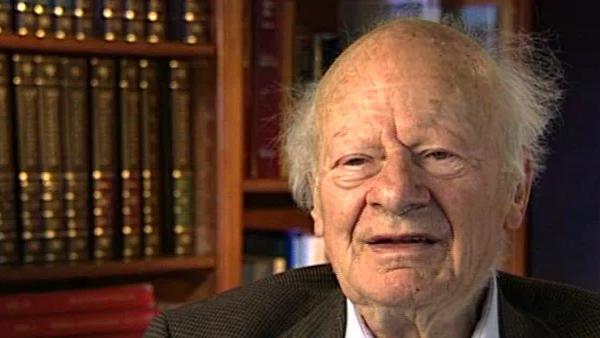NEXT STORY

Hiring Robert Bacher to Cornell
RELATED STORIES

NEXT STORY

Hiring Robert Bacher to Cornell
RELATED STORIES


|
Views | Duration | |
|---|---|---|---|
| 51. First impressions of Cornell | 1 | 669 | 03:33 |
| 52. Stanley Livingston's small cyclotron | 452 | 02:46 | |
| 53. Hiring Robert Bacher to Cornell | 413 | 01:33 | |
| 54. Writing Bethe's Bible | 732 | 02:38 | |
| 55. Neutron bombardment and resonance theory: Fermi's discoveries | 959 | 04:18 | |
| 56. Explaining neutron bombardment and resonance theory | 415 | 02:13 | |
| 57. Continuing work on solid state physics | 357 | 01:10 | |
| 58. Attending meetings of the American Physical Society | 383 | 03:11 | |
| 59. Electrodynamics and becoming a full professor at Cornell | 496 | 01:55 | |
| 60. Visiting Isidor Isaac Rabi | 903 | 01:36 |


There was a small cyclotron which was being built by Stanley Livingston who had been the right-hand man of Ernest Lawrence in building the first cyclotron at Berkeley. And I understand that while Lawrence had the idea, the actual building was done mainly by Livingston.
[Q] And when you say 'A small cyclotron...?'
It was really a pocket cyclotron. It could give protons of about 1 million electron volts, and deuterons of 2 million electron volts, and it could give helium at higher energy but I don't think this was ever used. Deuterons were the favorite projectile to... to bombard nuclei with because they had such very strong reaction with any nucleus, and so it was deuteron reactions which were mainly investigated. So I very soon got very close to Livingston. Livingston had a card file of all papers on nuclear physics which had ever appeared, and Livingston was a very good experimenter, but didn't know much about the theory, so he was happy to have my explanation. And in this atmosphere I even did one... my only experimental paper. One of Livingston's students, I think his name was Weeks, was to follow Fermi in investigating the action of neutrons on nuclei. And so one evening, late evening, Weeks and I got together to count the reactions, I think the reaction makes alpha particles, which happen when you have argon and neutrons. My only experimental paper.
The late German-American physicist Hans Bethe once described himself as the H-bomb's midwife. He left Nazi Germany in 1933, after which he helped develop the first atomic bomb, won the Nobel Prize in Physics in 1967 for his contribution to the theory of nuclear reactions, advocated tighter controls over nuclear weapons and campaigned vigorously for the peaceful use of nuclear energy.
Title: Stanley Livingston's small cyclotron
Listeners: Sam Schweber
Silvan Sam Schweber is the Koret Professor of the History of Ideas and Professor of Physics at Brandeis University, and a Faculty Associate in the Department of the History of Science at Harvard University. He is the author of a history of the development of quantum electro mechanics, "QED and the men who made it", and has recently completed a biography of Hans Bethe and the history of nuclear weapons development, "In the Shadow of the Bomb: Oppenheimer, Bethe, and the Moral Responsibility of the Scientist" (Princeton University Press, 2000).
Tags: Berkeley, Stanley Livingston, Ernest Lawrence
Duration: 2 minutes, 47 seconds
Date story recorded: December 1996
Date story went live: 24 January 2008